Songwriting basics: how to use chromatic mediants to add flavour to your chord progressions
Discover the secret music theory weapon used by soul/gospel artists and film composers
The term ‘chromatic mediants’ probably isn’t something you’ll have come across very often in your songwriting pursuits, but working these mysterious creatures into progressions can be a useful way to expand your palette of chords beyond the realms of your regular, day-to-day diatonic triads.
So what is a chromatic mediant, anyway? In music theory, diatonic means ‘in the key’, while chromatic means ‘not in the key’. So if you have the scale of C major, which contains the notes C, D, E, F, G, A and B, those notes are all diatonic to the key of C major.
Something like a G# note, however, is not in the key of C major, so in this context G# is described as chromatic.
The same thing goes for chords - when in the key of C major, F major, for example, is a diatonic chord as it belongs to the key, but Ab major, say, is a chromatic chord because it does not belong to the key of C major.
Meanwhile, the term ‘mediant’ refers to either the third or the sixth chord in a diatonic set. So a chromatic mediant is an altered mediant or submediant chord, related to the tonic chord by means of its root note being a major or minor third interval above or below that of the tonic.
Film composers like chromatic mediants because of their strong emotional pull, but they work in songwriting too, especially as passing chords in the neo-soul or gospel genres.
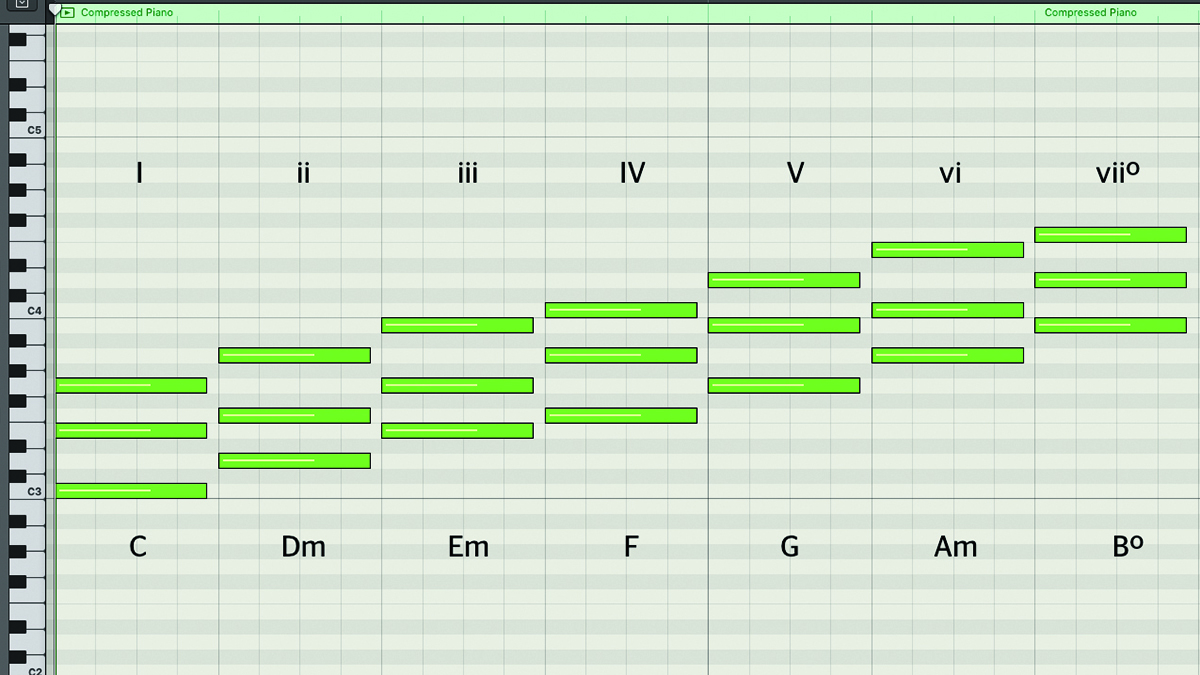
Step 1: Let’s start with a look at a harmonised major scale. This is made by taking a major scale - C major in this case, seven notes played on the white notes of the keyboard from C to B - and stacking up alternate notes from the scale to get a series of diatonic three-note chords or triads. This gives us C, Dm, Em, F, G, Am and Bdim.
Get the MusicRadar Newsletter
Want all the hottest music and gear news, reviews, deals, features and more, direct to your inbox? Sign up here.
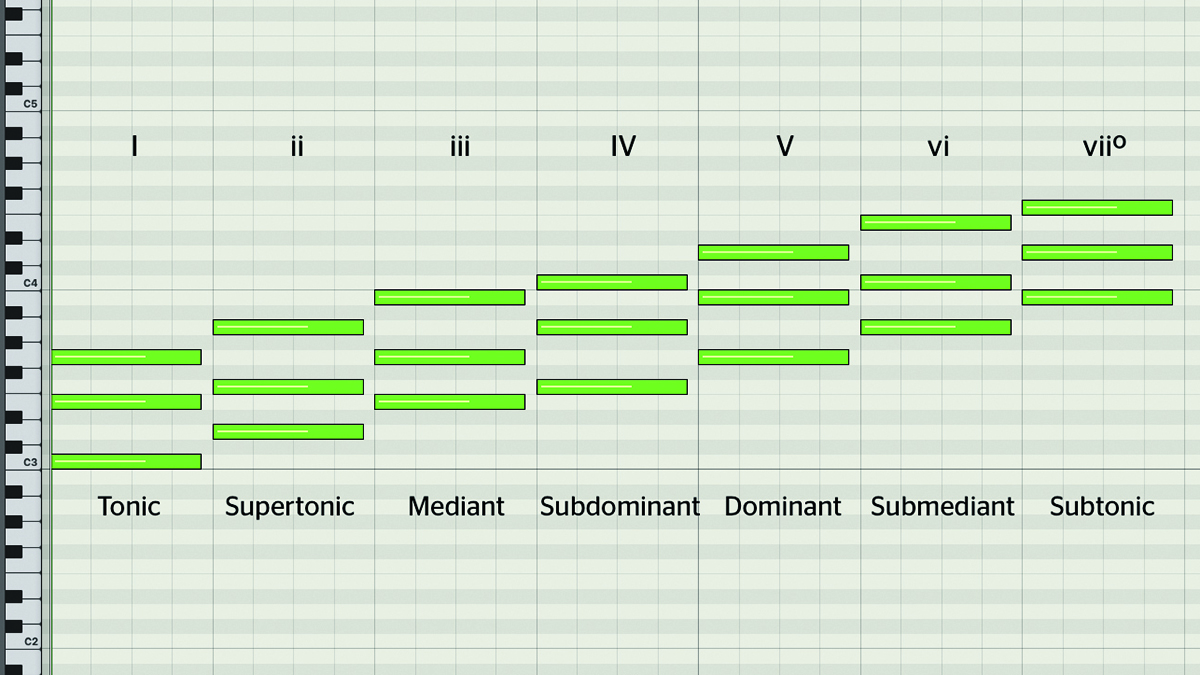
Step 2: Just as the notes or ‘degrees’ of the scale have names that relate to their position in the order of the scale, the set of diatonic chords that we’ve built from those notes share these same names - the Tonic, Supertonic, Mediant, Subdominant, Dominant, Submediant and Subtonic, or Leading Tone.
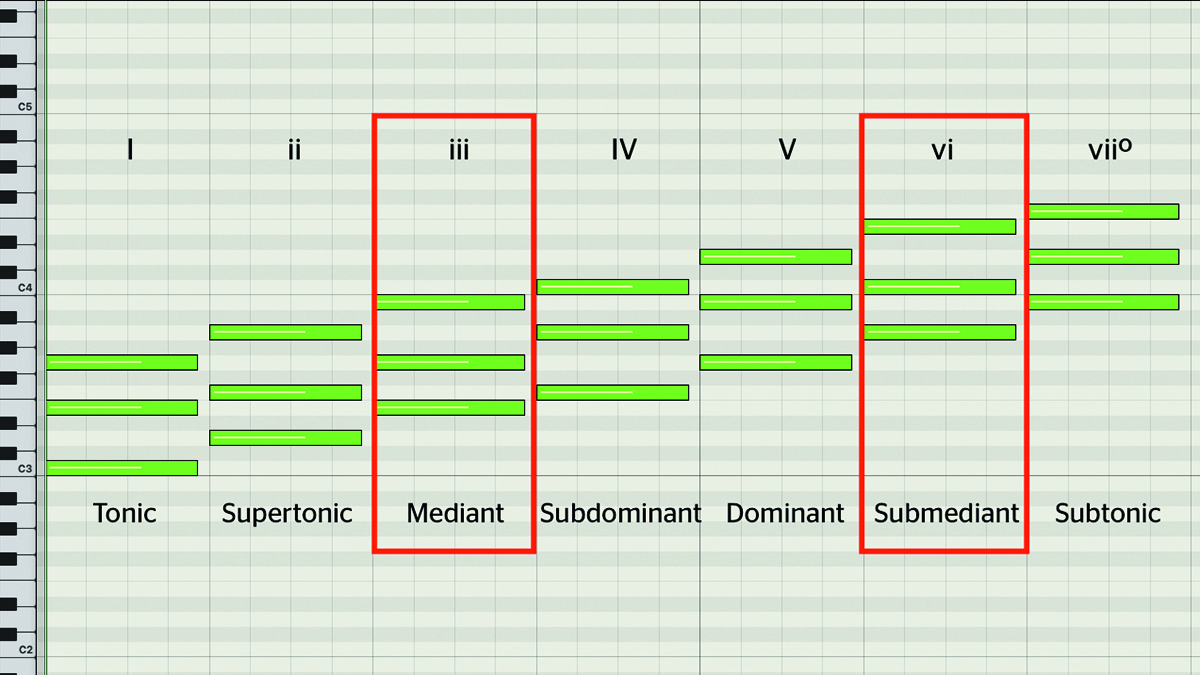
Step 3: The chords we’re interested in here are the mediant - the iii chord (which, in the case of C major, is E minor) - and the submediant - the vi chord (Am here); those whose roots are a 3rd interval away from the tonic C major chord root. The mediant’s root is a major 3rd above the tonic, while the submediant’s root is a minor 3rd below the tonic.

Step 4: A chromatic mediant is a iii or vi chord that’s been altered in one of two ways. Firstly, it may have been made major when it should be minor. For instance, in the key of C major, we can take the iii chord of E minor (E, G, B) and make it E major by raising the third, G, to G#. G# is not in the scale of C major, so that makes it chromatic.
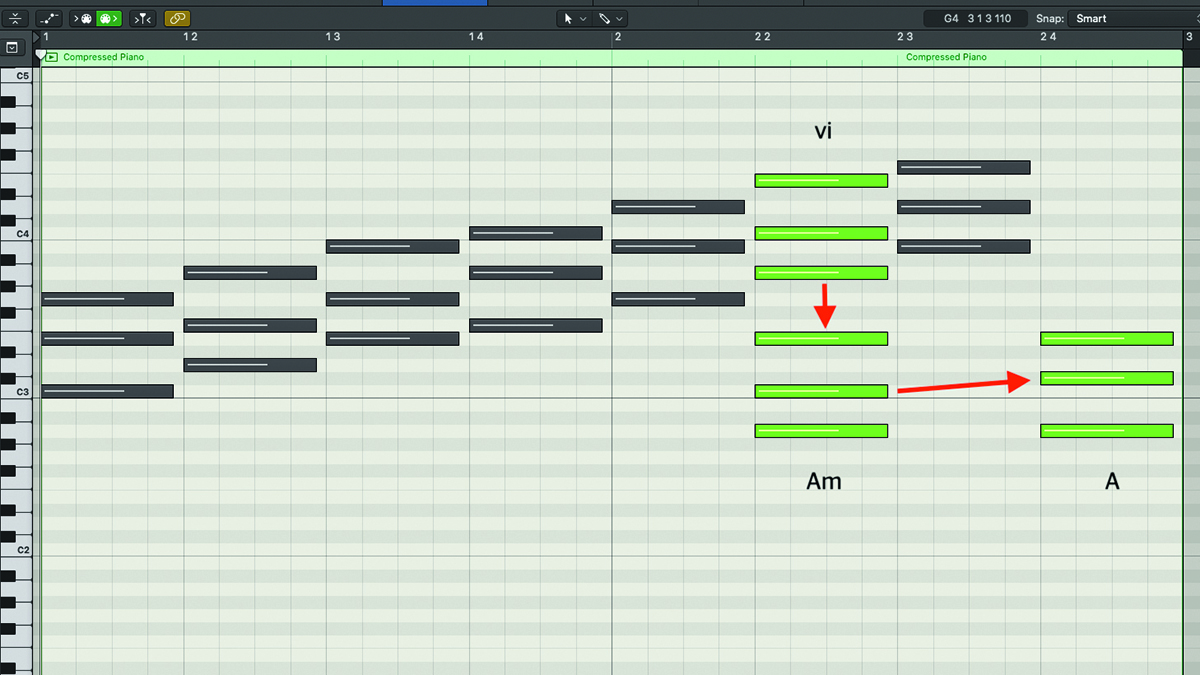
Step 5: Since we’ve successfully identified the mediants as being chords iii and vi of a diatonic set, we could also do a similar thing with the minor vi chord of the key of C major, A minor (A, C, E), which we can make chromatic by raising the third, C, to a C#, making an A major chromatic mediant chord.
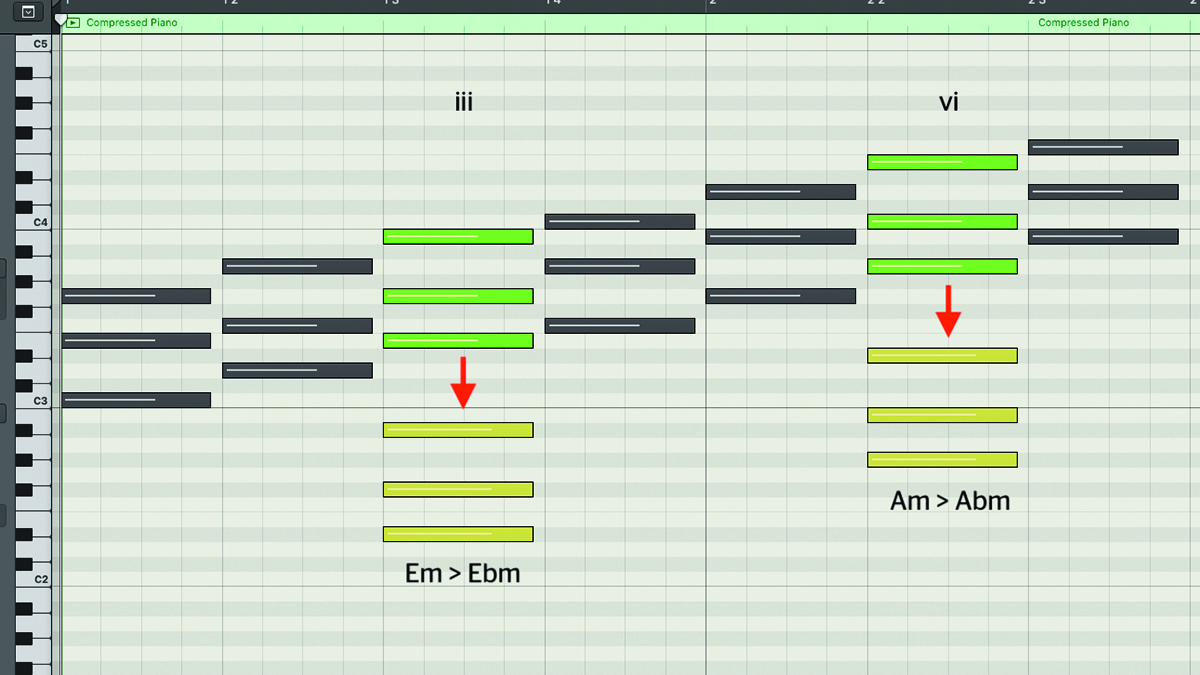
Step 6: The second way we might transform a diatonic mediant into a chromatic mediant is by flattening the whole chord by one semitone - so an E minor (E, G, B) might become an Ebm chord (Eb, Gb, Bb), or A minor (A, C, E) might become an Ab chord (Ab, B, Eb). That gives us four chromatic mediants so far.
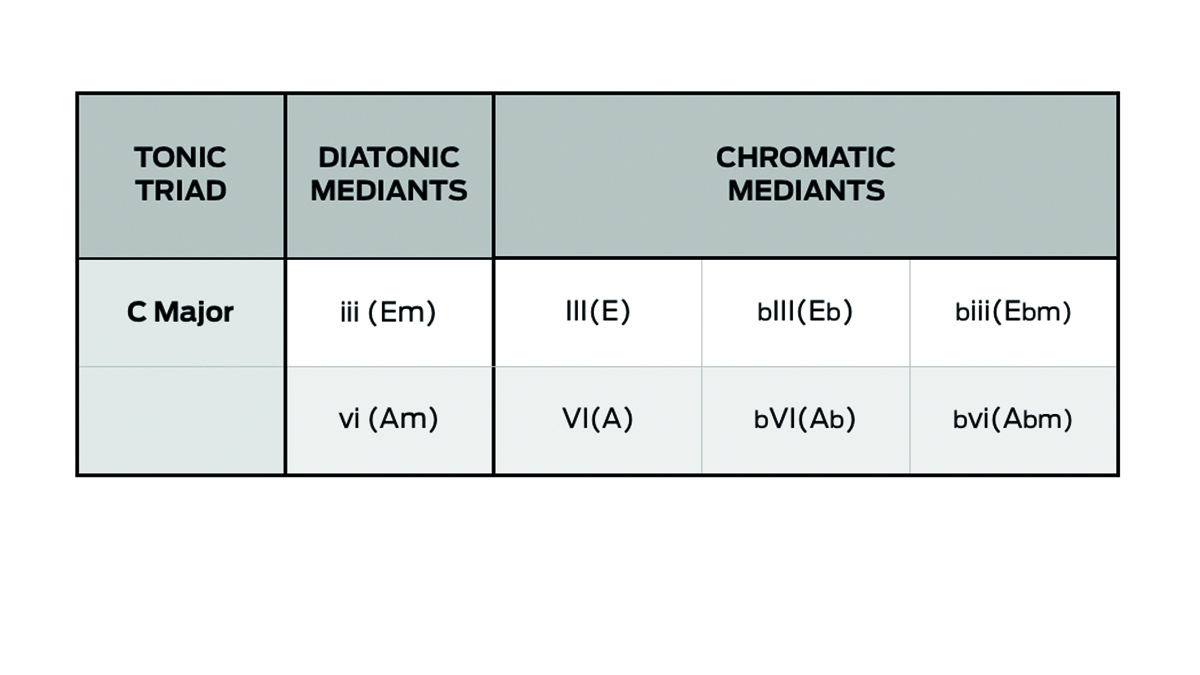
Step 7: Chromatic mediants can be either major or minor, so that means we could also add Eb major (Eb, G, Bb) and Ab major (Ab, C, Eb) to our list, making a total of six possible chromatic mediant chords in any key. This table shows all the possible chromatic mediants for the key of C major.
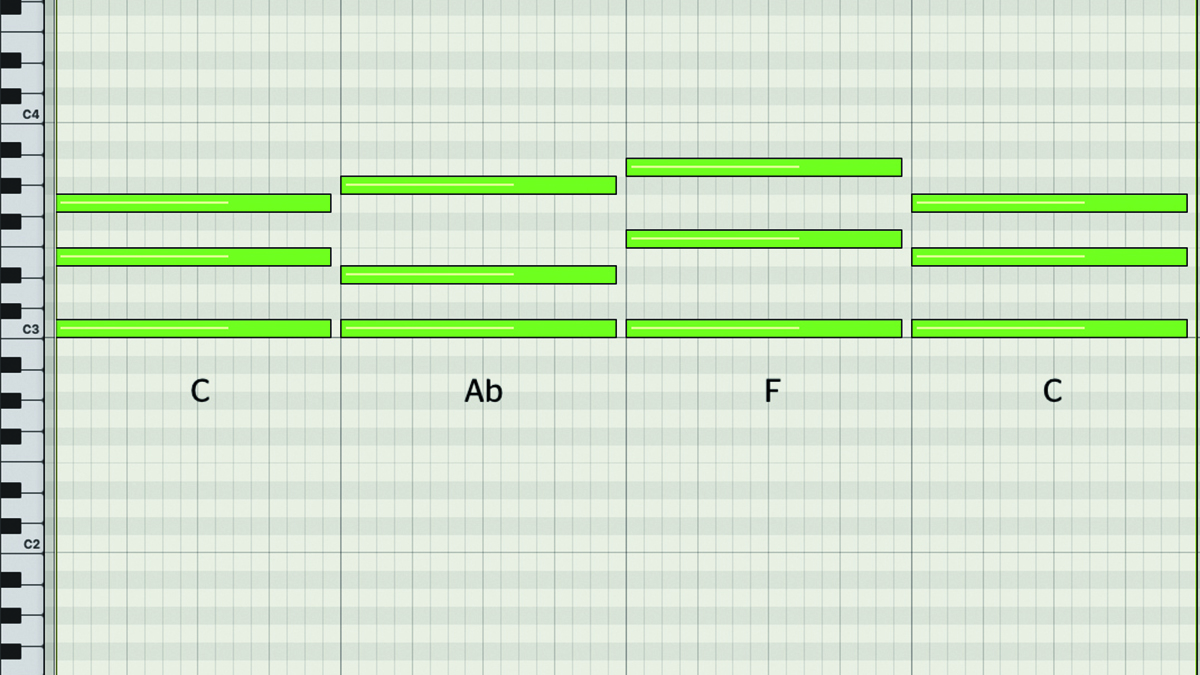
Step 8: So how do we use chromatic mediants in a production setting? The simplest method would be to just insert one into an otherwise diatonic progression to give things a bit of a lift. Choosing the flattened major chromatic mediants - Ab or Eb major in the key of C - gives us an ethereal sound. You could maybe have: C > Ab > F > C, as shown here.
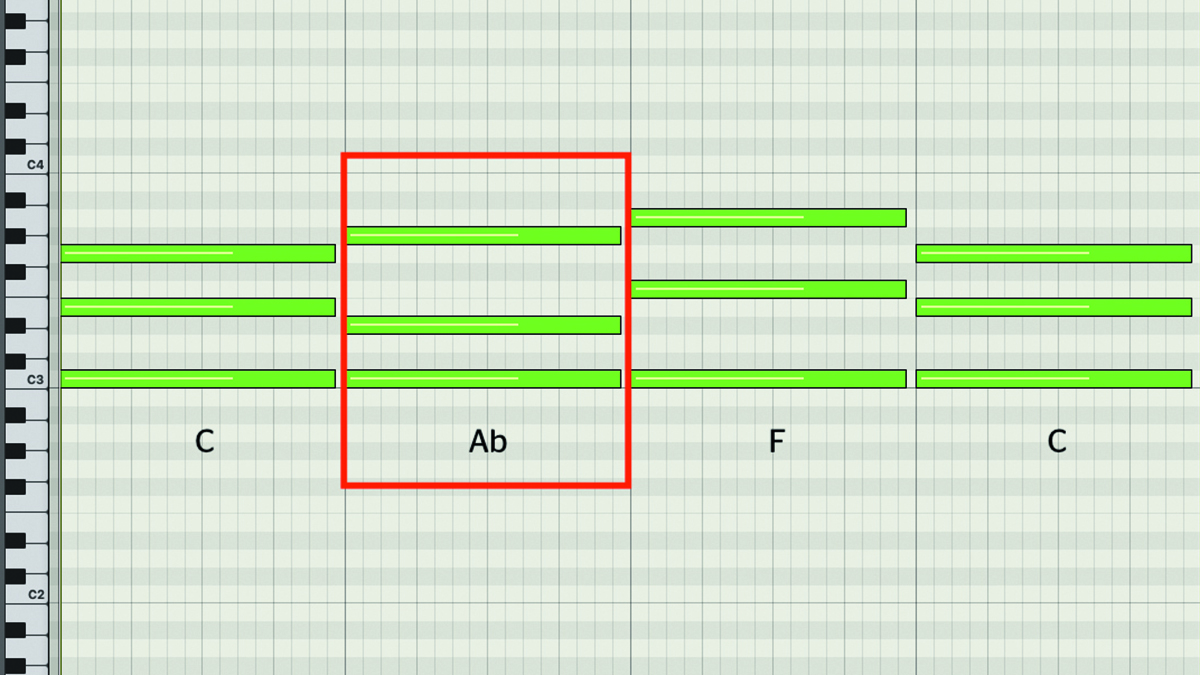
Step 9: This works well because of the Ab major chord’s proximity to the other chords in the progression. If we compare the Ab chord to the diatonic chords, we see that it contains the tonic C (shared with C and F) and also Ab, only one semitone away from the A natural in the F triad. We’re also close to the dominant G chord, though there are no shared notes.
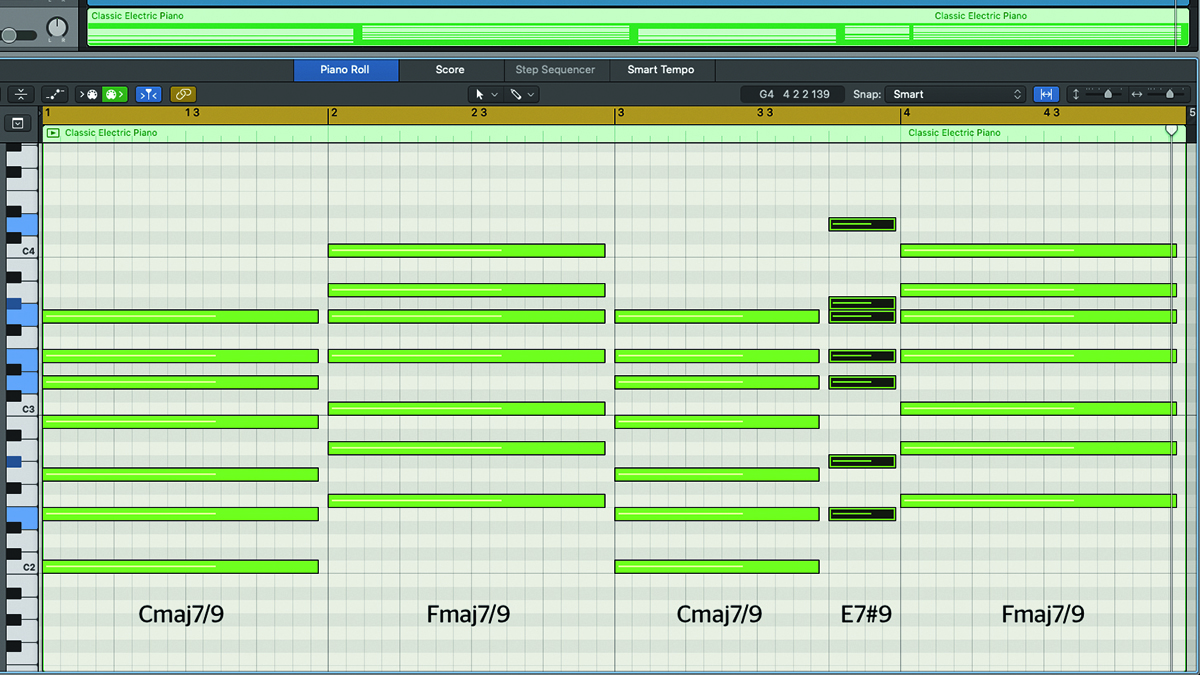
Step 10: Chromatic mediants make great passing chords for a bit of a gospel sound. Here I’ve got Cmaj7/9 (C, E, G, B, D, E, G) > Fmaj7/9 (F, A, C, E, G, A, C) playing in the first two bars. When the phrase repeats, I’ve inserted an E7#9 (E, Ab, D, E, G, Ab, D) as a passing chord on the last beat of the bar before the change to the Fmaj7/9 chord.
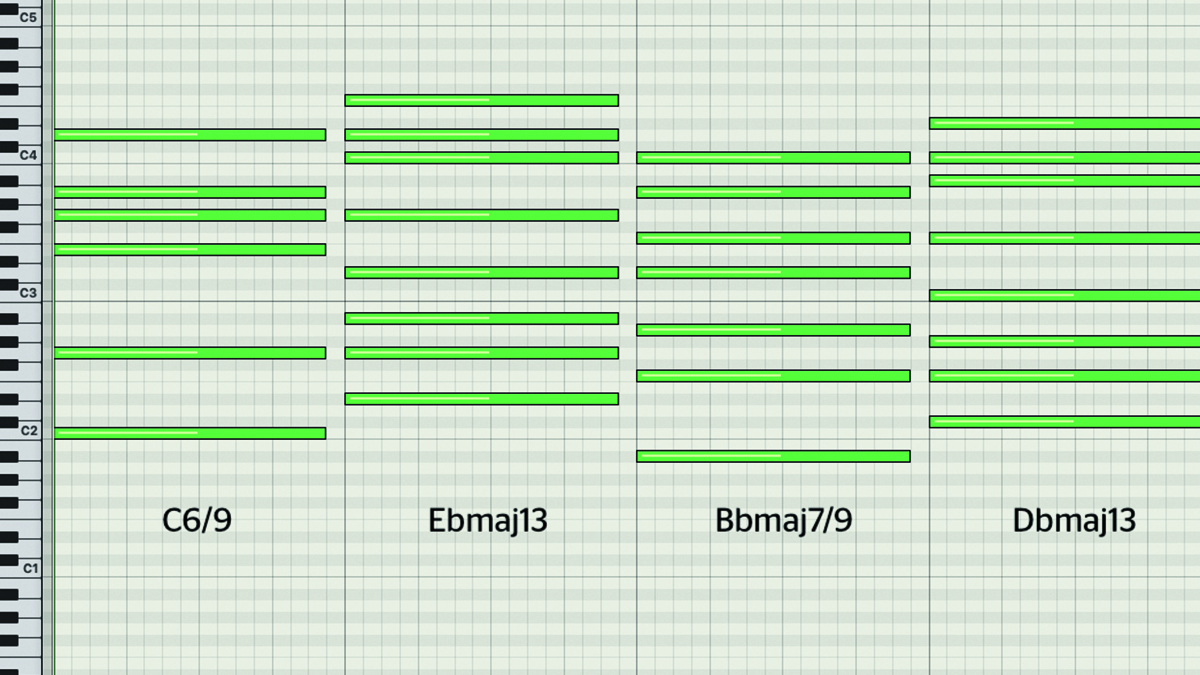
Step 11: This neo-soul progression uses two pairs of extended chords with a chromatic mediant movement between each pair: C6/9 (C, G, E, G, A, D) > Ebmaj13 (Eb, G, Bb, D, G, C, D, F) > Bbmaj7/9 (Bb, F, A, D, F, A, C) > Dbmaj13 (Db, F, Ab, C, F, Bb, C, Eb). The chord shape isn’t important, it’s the root notes that determine the chromatic mediant relationship.
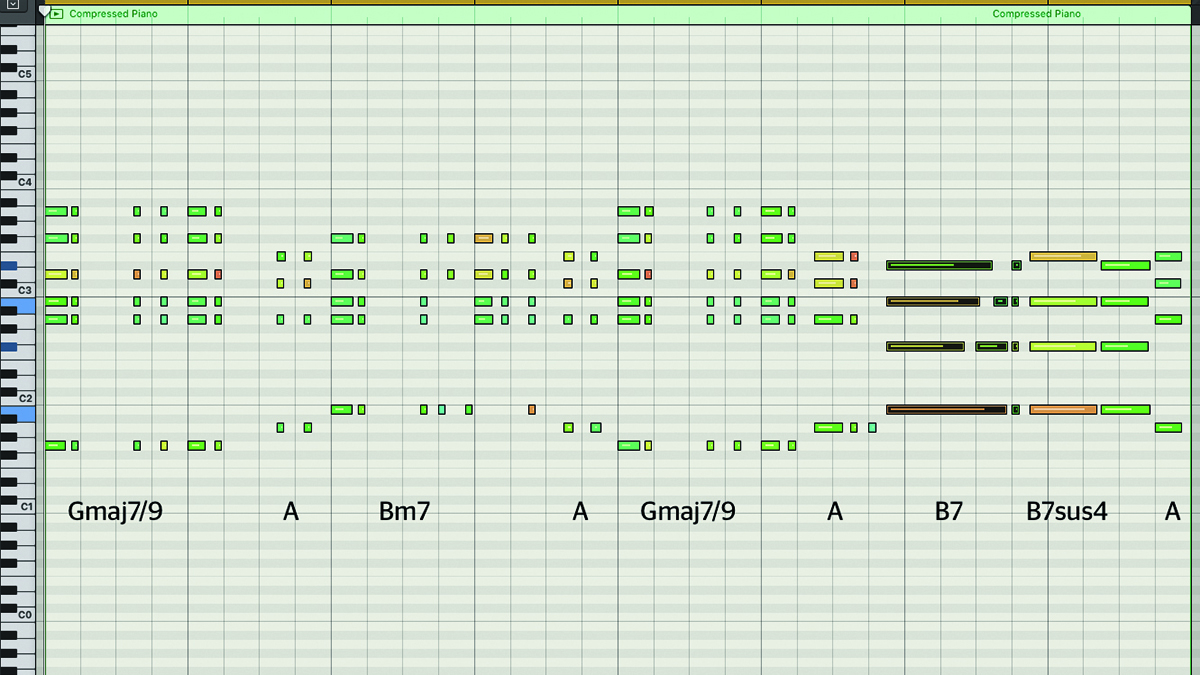
Step 12: In our last example, we’ve got a two-chord Gmaj7/9 > A > Bm7 > A movement going on. Bm (B, D, F#) is the diatonic iii chord - the mediant - of the key of G major, so to get a chromatic mediant movement second time around, we’ve transformed the Bm7 chord into a dominant B7 chord by raising the D up to a D#.
Pro tip: chromatic effect
Our association of chromatic mediant movements with a sense of magic and wonder dates back to tactics employed by composers of the 19th century romantic period.
For example, the Italian composer Rossini was keen on the use of chromatic mediants to accompany sudden surprise, rage or frustration in a character in one of his operas.
This trend of classical composers to reinforce emotion with chromatic mediants has permeated through the ages into the modern movie soundtrack industry and subsequently into the collective consciousness of music consumers as a whole.
Computer Music magazine is the world’s best selling publication dedicated solely to making great music with your Mac or PC computer. Each issue it brings its lucky readers the best in cutting-edge tutorials, need-to-know, expert software reviews and even all the tools you actually need to make great music today, courtesy of our legendary CM Plugin Suite.










